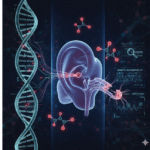High blood pressure, also known as hypertension, affects millions of people worldwide and significantly increases the risk of heart disease, stroke, and kidney failure. While medications can help, many health experts emphasize that the first step toward lowering blood pressure should be lifestyle changes—especially improvements in diet. And when it comes to choosing the right foods, bananas just might be one of your best allies.
Most people are aware that too much salt (sodium) in the diet can raise blood pressure. What many don’t realize, however, is that potassium—a mineral found abundantly in bananas—plays a key role in helping your body manage the negative effects of sodium. By eating more potassium-rich foods and reducing salt intake, you can make a meaningful impact on your blood pressure numbers without relying solely on medication.
Why Salt Raises Blood Pressure

Salt is made up of sodium and chloride. While sodium is essential for bodily functions such as nerve signaling and muscle contractions, most people consume far more than the recommended daily amount. The American Heart Association advises no more than 2,300 milligrams (mg) of sodium per day, with an ideal limit of 1,500 mg for most adults—yet the average American consumes over 3,400 mg daily.
Excess sodium causes the body to retain water, which increases the volume of blood in your blood vessels. This added volume puts pressure on the walls of arteries, causing blood pressure to rise. Over time, this can lead to serious health complications including heart attack, stroke, and damage to internal organs.
Potassium to the Rescue
Enter potassium—the unsung hero in the fight against high blood pressure. Potassium helps regulate fluid balance, nerve function, and muscle contractions, including those of the heart. More importantly for people with hypertension, potassium helps counteract the effects of sodium.
When you consume more potassium, your kidneys excrete more sodium through urine. This process reduces fluid retention and lowers blood pressure naturally. Additionally, potassium eases tension in blood vessel walls, further supporting a healthy circulatory system.
The recommended daily intake of potassium for adults is around 4,700 mg. Unfortunately, most people fall far short of this target, often due to diets heavy in processed foods and low in fresh fruits and vegetables.
Why Bananas Are a Heart-Healthy Choice

Bananas are one of the most accessible and affordable sources of potassium, with a medium banana containing roughly 400–450 mg of potassium. But their benefits go beyond that.
Here’s why bananas deserve a regular place in your diet:
- Convenience: Bananas require no preparation and are perfect for on-the-go snacking.
- Low in Sodium: Naturally low in salt, bananas help balance sodium intake.
- Fiber-Rich: They contain dietary fiber, which supports healthy digestion and can improve cholesterol levels.
- Other Nutrients: Bananas also provide vitamin B6, vitamin C, and magnesium—nutrients that contribute to cardiovascular health.
Of course, bananas aren’t the only potassium-rich food. Other excellent sources include sweet potatoes, spinach, avocados, beans, lentils, oranges, and tomatoes. Including a wide variety of these in your meals can help you meet your potassium needs while keeping your diet balanced and nutritious.
The Salt Swap Strategy
Reducing salt doesn’t mean sacrificing flavor. Try these tips to cut back on sodium while enhancing the taste of your meals:
- Cook at Home: Restaurant and processed foods are often loaded with hidden sodium. Preparing meals at home gives you full control.
- Use Herbs and Spices: Season your food with garlic, lemon juice, turmeric, basil, or black pepper instead of reaching for the salt shaker.
- Read Labels: Choose low-sodium or no-salt-added versions of canned soups, vegetables, and snacks.
- Rinse Canned Foods: If using canned beans or veggies, rinse them to remove excess sodium.
By making small adjustments, you can significantly lower your sodium intake and boost your potassium levels—setting the stage for better heart health.
Other Lifestyle Tips for Lowering Blood Pressure

While bananas and dietary changes are important, managing blood pressure effectively involves a holistic approach. Here are a few additional strategies:
- Exercise Regularly: Aim for at least 30 minutes of moderate activity most days of the week.
- Maintain a Healthy Weight: Losing even a few pounds can make a noticeable difference in your blood pressure.
- Limit Alcohol and Caffeine: Both can affect blood pressure levels, especially in excess.
- Manage Stress: Chronic stress contributes to hypertension, so make time for relaxation, mindfulness, or hobbies.
- Quit Smoking: Tobacco use damages blood vessels and raises blood pressure instantly.
Final Thoughts
Lowering your blood pressure doesn’t always require a prescription—sometimes, it starts with what’s on your plate. Choosing potassium-rich foods like bananas and reducing sodium intake is a simple, natural way to support heart health and improve your overall well-being. By making bananas a regular part of your diet and combining them with other healthy lifestyle choices, you can take a big step toward better blood pressure and a healthier heart.
So next time you’re choosing a snack, skip the salty chips and pass the bananas—your body will thank you.





